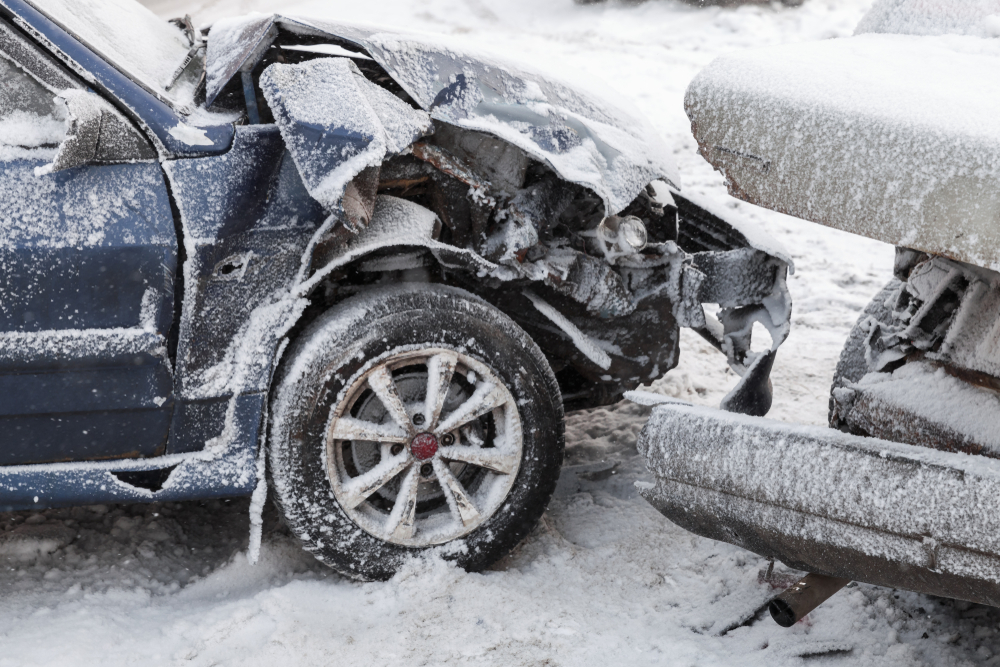It’s only a matter of time before the snow begins to fall, Christmas music begins playing and cars veer and skid around the roads. Although you can’t completely guarantee that your vehicle won’t slip and slid this winter, you can be prepared in case it does. Remaining calm and following these steps can help avoid a costly winter accidents this season.
Before the Snow
One of the best ways to ensure your car stays on the road this winter is by making sure you have winter tires. Winter tires are designed specifically to stay more flexible in colder temperatures (7 degrees Celsius or lower), which allows them to spread out and maintain their grip on the road. This means no matter what the conditions are, ice, snow, slush or dry pavement, winter tires will outperform all-seasons throughout the winter months. Most winter tires have a deeper tread pattern, which will help increase their traction on snow and ice.
September is the ideal time to start considering winter tires. Most people don’t think to have them installed until the first snow falls. Don’t wait until then as you could be waiting 2-3 weeks before having your tires switched over.
Did You Know? You can look for the winter tire logo on your tires to ensure you have tires that have gone through rigorous testing to perform better in snowy weather.
What to Do If You Skid
Driving in Ontario, you have likely experienced at least one moment where your vehicle has slipped a bit out of your control. If you remain calm and follow these steps you should be able to recover easily and avoid a collision.
- Remain calm. If you start breaking hard, hitting the gas or quickly turning the vehicle will likely end up being stuck in a snow bank or worse.
- Look where you want to go.
- Make small, controlled movements with the steering wheel
- Ease off the gas and straighten your wheels, when traction returns, steer gently in the direction you want to go
If you are driving on rural roads and come across a snow drift always remember to slow down and put your hazards on to warn those behind you. Always remember to anticipate your turns, lane changes and braking. By slowing down and adjusting your driving to the conditions you can help avoid a costly accident.
What to Do If Your Car Is Stuck
But what happens when you can’t correct a skid? What happens if your car gets stuck in a snow bank? Sometimes winter accidents are out of our control, but knowing how to troubleshoot these accidents can help free up your car quicker.
If safe to do so, get out of your vehicle and see why your car is stuck. Snow trapped underneath of the tires can cause the vehicle to remain stuck due to the lack of traction. Clearing the snow away can help stop your wheels from spinning and assist in freeing your vehicle. Keeping a small shovel in your trunk can help assist you in removing any of the build up.
Important Note: During this time, you should also ensure that any snow or ice is clear from the tailpipe. If your car’s exhaust is not clear it can cause a build up of carbon monoxide which can be fatal.
Sometimes it’s not possible to clear all of the snow that may be causing your tires to spin aimlessly. Laying some cat litter down or traction mats underneath of your tires should give them the boost they need to gain traction.
If you do get stuck and can’t get your car free you could be waiting a while before someone can come and help. Have an emergency bag in your backseat or trunk that has additional items you may need such as:
- First Aid Kit
- Windshield Washer Fluid
- Booster Cables
- Small Shovel
- Ice scrapper
- Cat Litter (or Traction Mats)
- Flashlight or Road Side Flares
- A Blanket
- Water and snacks
The winter season brings lots of different challenges and can be very unpredictable. Being prepared before you hit the road is critical to keeping you and your family safe this winter.



